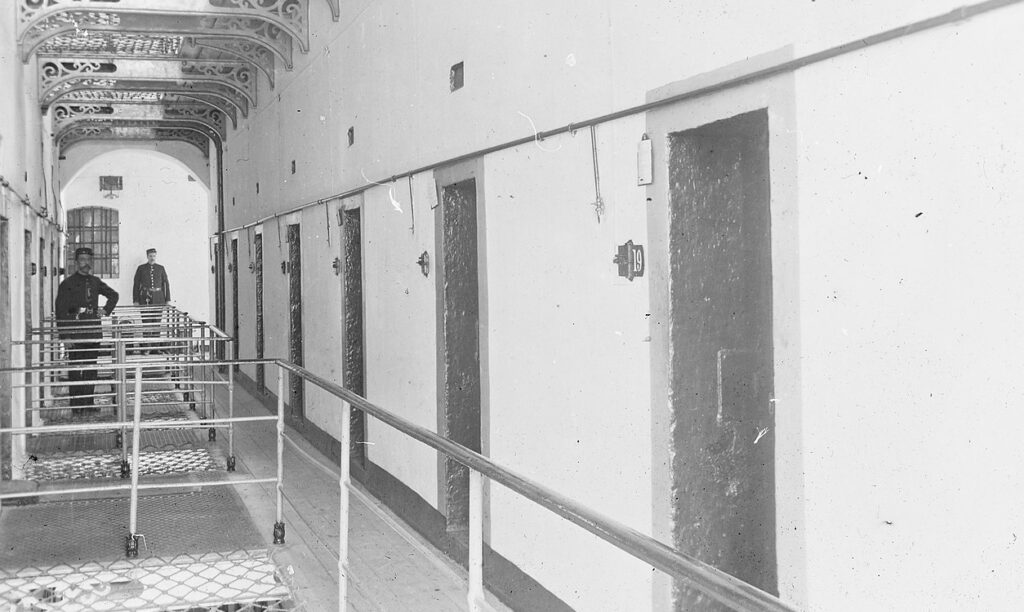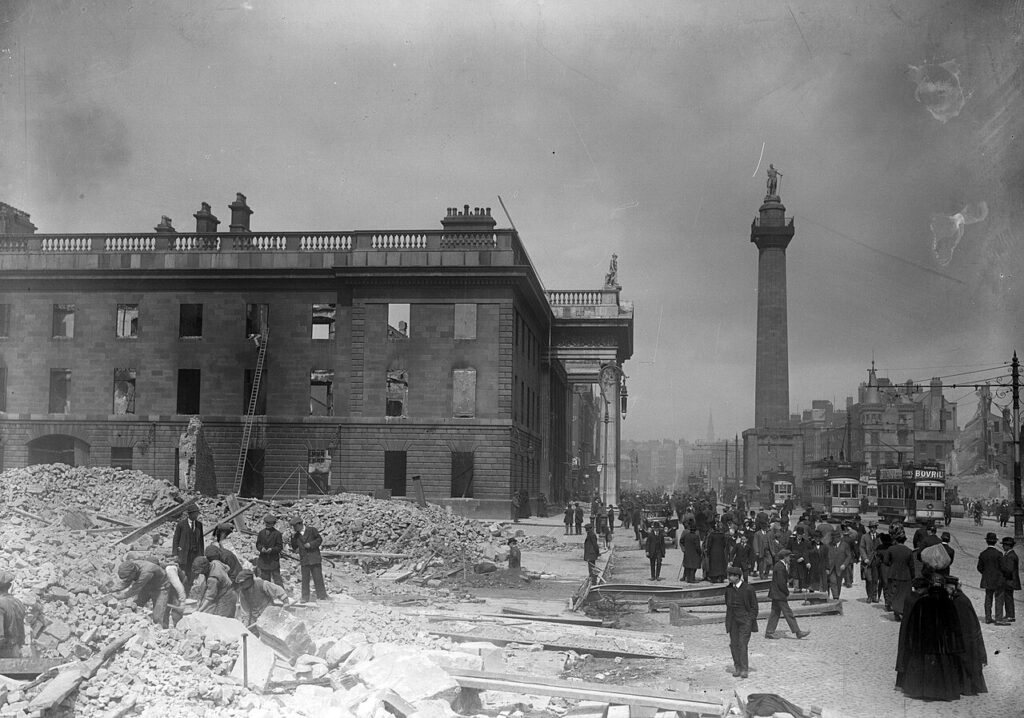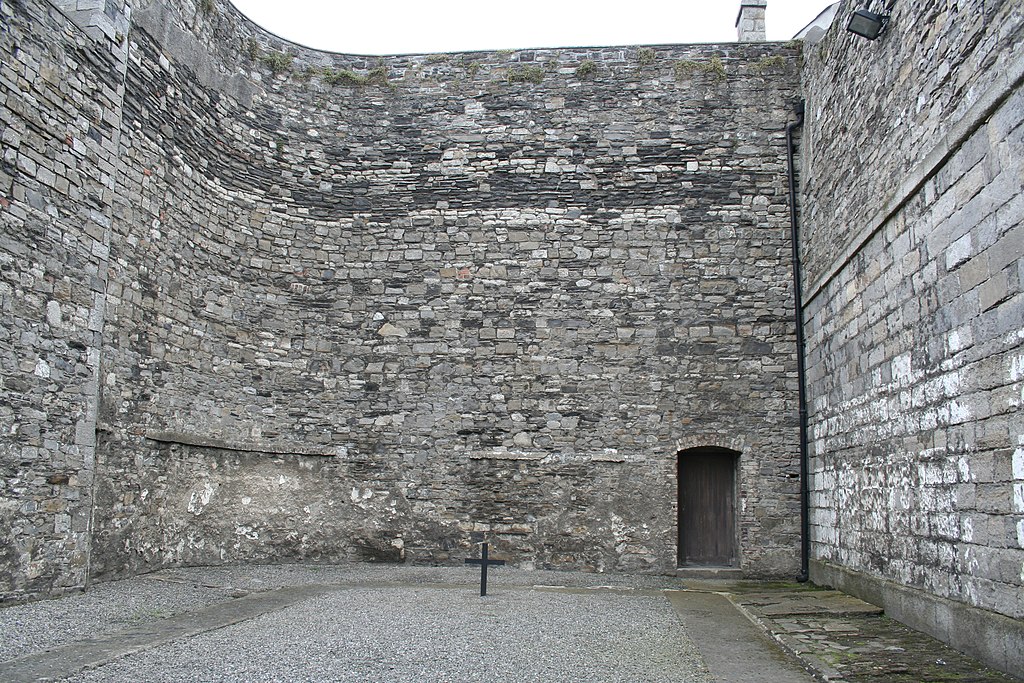Kilmainham Gaol stands as one of Ireland’s most compelling historical sites—a brooding limestone fortress that has witnessed centuries of rebellion, tragedy, and the relentless pursuit of freedom. Once a notorious prison, it is now a major museum and national monument, drawing visitors from around the world who seek to understand the crucible of modern Irish identity. In this comprehensive guide, we’ll journey through the Kilmainham Gaol history, from its grim beginnings to its role in the Easter Rising, its famous prisoners, unique architecture, and its enduring legacy as a symbol of Irish resilience.
If you’re planning a trip to Dublin, here’s why Kilmainham Gaol should top your list—and how to make the most of your visit.
What is Kilmainham Gaol and why is it significant?
Kilmainham Gaol (pronounced “Kil-MAIN-am Jail”) is a former prison located in the Kilmainham area of Dublin, Ireland. Opened in 1796, it operated as the County of Dublin Gaol for over 120 years before closing in 1924. Today, it is preserved as the Kilmainham Gaol Museum, a must-see among Dublin historical sites, and a touchstone for those interested in Irish history Kilmainham Gaol.

Why is it significant? Kilmainham Gaol is synonymous with Ireland’s struggle for independence. It housed—and in some cases executed—many of the most prominent figures in Irish nationalism, particularly the leaders of the 1916 Easter Rising. Yet, its story is not only one of political prisoners and revolutionaries. For much of its existence, it was a place of suffering for ordinary men, women, and even children, many of whom were incarcerated for minor offences or simply for being destitute during the Great Famine.
In this article, you’ll learn about:
- The construction and evolution of Kilmainham Gaol
- Its pivotal role in Irish rebellions and the Easter Rising
- The lives and legacies of its most famous prisoners
- The prison’s unique architecture, including the Victorian Panopticon
- What to expect when visiting Kilmainham Gaol today
- Its place in popular culture and the Irish national memory
Let’s unlock the gates and step inside.
The history of Kilmainham Gaol
Construction and early years (1796–1800s)
Kilmainham Gaol was conceived as a modern replacement for Dublin’s old, squalid dungeon. Construction began in 1786, designed by architect John Trail, and the prison opened its doors in 1796. Built on Gallows Hill, it was intended to offer better ventilation and drainage—though “better” is a relative term, as conditions remained harsh.
In its early years, Kilmainham Gaol was a microcosm of 18th and 19th-century penal philosophy. There was no segregation: men, women, and children were crammed together, sometimes up to five per cell, with only a single candle for light and heat every two weeks. Windows were unglazed, and the cold, damp limestone walls made the environment perpetually uncomfortable. Women and children often slept on straw, while men might have an iron bedstead—luxury by comparison.
Many prisoners were “common criminals”—debtors, thieves, beggars, and those convicted of petty offences. Some were awaiting transportation to penal colonies in Australia, a fate that befell over 4,000 inmates from Kilmainham Gaol.
Key historical periods & events
1798 Rebellion
From the outset, Kilmainham Gaol was swept into the tides of Irish political unrest. The 1798 Rebellion, inspired by revolutionary fervour in France and America, saw many United Irishmen imprisoned here. The gaol quickly became a symbol of British oppression and Irish resistance.
The Great Famine (An Gorta Mór)
The Irish Potato Famine (1845–1850) brought a surge of desperate people into Kilmainham Gaol. Overcrowding reached crisis levels, with up to six people in cells built for one. Many were jailed for stealing food or begging—ironically, some sought imprisonment as a means of survival, since even the meagre rations inside were preferable to starvation outside.
19th Century Political Prisoners
Throughout the 1800s, Kilmainham Gaol became increasingly associated with political prisoners. The Fenians (Irish Republican Brotherhood), Land Leaguers, and Home Rule advocates all passed through its gates. Notable among them was Robert Emmet, executed in 1803 after a failed rebellion, and Charles Stewart Parnell, leader of the Irish Parliamentary Party, who was held in 1881 for his agitation for land reform.
The 1916 Easter Rising
No chapter in Kilmainham Gaol history is more poignant or consequential than the events following the Easter Rising of 1916. After the week-long insurrection in Dublin, British authorities rounded up the leaders and brought them to Kilmainham. Fourteen men, including all seven signatories of the Proclamation of the Irish Republic, were executed by firing squad in the Stonebreakers’ Yard between 3–12 May 1916. Among them: Patrick Pearse, James Connolly (so gravely wounded he had to be tied to a chair), Joseph Plunkett, Thomas Clarke, Thomas MacDonagh, Éamonn Ceannt, and Seán Mac Diarmada.

The executions, carried out in secrecy and with ruthless efficiency, shocked the Irish public and transformed the executed men into martyrs for the cause of independence. The emotional resonance of these events still echoes through the prison’s cold corridors.
War of Independence & Irish Civil War
Kilmainham Gaol’s role as a crucible of Irish nationalism continued through the War of Independence (1919–1921) and the subsequent Civil War (1922–1923). The prison was used to detain members of the Irish Republican Army (IRA), anti-Treaty forces, and even women involved in the struggle, such as Maud Gonne, Nora Connolly, and Dorothy Macardle. The Civil War saw further executions and hunger strikes, with both sides using the gaol as a tool of repression.
Decommissioning and neglect
After the Civil War, Kilmainham Gaol was officially closed as a prison in 1924. The last prisoner to leave was Éamon de Valera, who would later become President of Ireland. The building then fell into decades of neglect and decay, its future uncertain.
Restoration and opening as a museum
In the 1960s, a group of dedicated volunteers formed the Kilmainham Gaol Restoration Society, determined to save the site as a national monument. Their efforts, fuelled by a desire to honour the memory of those who had suffered and died there, led to the painstaking restoration of the prison. The gaol was handed over to the Irish State in 1986 and is now managed by the Office of Public Works as the Kilmainham Gaol Museum.
Key figures associated with Kilmainham Gaol
Leaders of the 1916 Rising
The most famous prisoners Kilmainham Gaol ever held were the leaders of the 1916 Easter Rising. Their names are etched into Irish history:
- Patrick Pearse: Teacher, poet, and the symbolic leader of the Rising. Executed 3 May 1916.
- James Connolly: Socialist leader and commander of the Irish Citizen Army. Executed while tied to a chair due to his injuries.
- Joseph Plunkett: Poet and strategist, who married Grace Gifford in the prison chapel hours before his execution.
- Thomas Clarke, Thomas MacDonagh, Éamonn Ceannt, Seán Mac Diarmada: Each played pivotal roles in the Rising and were executed in the Stonebreakers’ Yard.
Other notable prisoners
- Charles Stewart Parnell: Imprisoned in 1881 for his leadership in the Land League movement.
- Countess Markievicz: Revolutionary and the first woman elected to the British Parliament, held for her role in the Rising.
- Éamon de Valera: Future President of Ireland, imprisoned during the Rising and later involved in the restoration of the gaol.
- Robert Emmet: Leader of the 1803 rebellion, executed at Kilmainham.
- Dorothy Macardle: Imprisoned during the Civil War, her prison diaries are now part of the museum’s collection.
The prison also held countless “ordinary” prisoners, including women and children, whose stories are increasingly recognised in the museum’s evolving narrative.
The architecture and layout of the gaol
The Victorian Wing (Panopticon Prison Ireland)
One of the most striking features of Kilmainham Gaol is its Victorian Wing, completed in the 1860s and inspired by the Panopticon design—a revolutionary approach to prison architecture that allowed guards to observe all prisoners from a central point. The light-filled, iron-clad atrium, with its sweeping staircases and walkways, is instantly recognisable from countless films and photographs.
The Panopticon was intended to foster discipline and reform through surveillance. In reality, it added a layer of psychological torment to the already harsh conditions.
The older West Wing
In stark contrast to the Victorian Wing, the original West Wing is a grim, rectangular block with cramped, dark cells. This area housed both political prisoners and the poorest inmates, especially during the Famine years.
Stonebreakers’ Yard Kilmainham
The Stonebreakers’ Yard is perhaps the most haunting space in the entire complex. It was here that the leaders of the 1916 Rising were executed, and today it serves as a place of sombre remembrance. The yard’s plain walls and simple memorial crosses evoke the gravity of what happened within.

Chapel
The prison chapel is notable for one of the most poignant moments in Kilmainham Gaol history: the marriage of Joseph Plunkett and Grace Gifford on the eve of his execution. The story of their brief union has become a symbol of love and sacrifice amid tragedy.
Cells
Kilmainham’s cells were small (about 28 square metres), cold, and damp, with little light and no heat. Prisoners were given a single candle every two weeks, and many slept on straw. The graffiti and autograph books left behind by prisoners, especially women, testify to their enduring connection to home, comrades, and Irish identity.
Kilmainham Gaol as a museum today
What to see and do
Visiting Kilmainham Gaol is a powerful, immersive experience. The only way to see the interior is by guided tour, which takes you through the chapel, the infamous cells, the Victorian Wing, and the Stonebreakers’ Yard. The tour is followed by a visit to the Kilmainham Gaol museum, which displays artefacts, letters, and personal effects of prisoners, along with exhibitions on the history of Irish nationalism and penal reform.
Guided Tour Highlights:
- Walk through the atmospheric Victorian Wing and feel the weight of history in every echo.
- Stand in the Stonebreakers’ Yard, where the fate of a nation was sealed.
- See the chapel where Joseph Plunkett and Grace Gifford’s tragic love story unfolded.
- Explore authentic cells, complete with original graffiti and personal effects.
Recommended Duration:
Allow at least 90 minutes for your visit. The guided tour itself lasts about an hour, but you’ll want extra time to absorb the museum’s exhibits and perhaps linger in the evocative courtyards.
Disclosure: This post contains affiliate links that help support and maintain this website. If you click through and make a purchase, I may earn a small commission at no extra cost to you.
The importance of booking
Kilmainham Gaol is one of Dublin’s most popular attractions, and Kilmainham Gaol tickets often sell out weeks in advance. Pre-booking online is mandatory—tickets are only available through the official website, and third-party tickets are not valid. Allow about 90 minutes for your visit, with the guided tour lasting around an hour and extra time for the museum.
Pre-booking is mandatory – Access to Kilmainham Gaol is by guided tour only. Tickets must be booked in advance online.
- Ticket release: Tours are released 28 days in advance at midnight (Irish time)
- Last-minute availability: Check the website from 9:15am on your desired visit date for cancellations
- Tour duration: 1 hour guided tour + museum access (allow 90 minutes total)
Location and how to get there
- Address: Inchicore Road, Kilmainham, Dublin 8 (about 3.5km west of Dublin city centre)
- Public transport: Multiple bus routes serve the area, Luas (tram), bicycle, or on foot
- Parking: There’s no parking on site. Paid parking available at nearby IMMA (Irish Museum of Modern Art)
Accessibility
While Kilmainham Gaol is a historic building with some accessibility challenges, ground-floor tours can be arranged for wheelchair users and those with mobility issues. Visitors with special requirements should contact the museum in advance to ensure a comfortable experience.
- Ground floor is wheelchair accessible
- Special ground floor tours can be arranged – email [email protected] in advance
- Not suitable for children under 6 years
- Buggies are not permitted on tours
Group bookings
- Groups of 10+ subject to availability
- School visits have special arrangements – see education page
- Contact: [email protected]
Visitor tips for the savvy explorer
- Photography policy: Photography is permitted in most areas, but flash and tripods are not allowed. Some areas may be off-limits for photos—always check with your guide.
- Dress for the weather: The prison can be chilly and damp, even in summer. Wear comfortable shoes and bring a light jacket.
- Arrive early: Tours start promptly and late arrivals may not be admitted. Arriving early gives you time to explore the grounds and nearby attractions.
- Bring curiosity: The guides are passionate and knowledgeable—don’t hesitate to ask questions or share your own insights.
- Check the official website: For the latest on opening hours, accessibility, and any temporary exhibits or closures.
Annual visitor statistics
- 2023: 258,154 visitors
- Ranking: 4th most visited OPW heritage site in Ireland
- Global appeal: Visitors from around the world
Why visit?
Kilmainham Gaol is more than a museum—it’s an emotional journey through Ireland’s struggle for freedom, a place where history feels immediate and personal. Whether you’re a history buff, a culture enthusiast, or simply curious, visiting Kilmainham Gaol offers insight, reflection, and a deep connection to the Irish past.
Kilmainham Gaol in popular culture
Kilmainham Gaol’s atmospheric interiors have made it a favourite location for filmmakers. It has appeared in major films and television series, including:
- The Italian Job (1969)
- In the Name of the Father (1993)
- Michael Collins (1996)
- Ripper Street (BBC series)
Its cinematic presence only adds to its mystique and global recognition.
The enduring legacy and symbolism
To the Irish people, Kilmainham Gaol represents both suffering and hope—a place of oppression transformed into a symbol of sacrifice, resilience, and the fight for freedom. It is sometimes called “the Bastille of Ireland,” a reference to its role in the birth of a nation.
The stories of those who passed through its gates—revolutionaries, poets, mothers, children—are woven into the fabric of Irish national memory. The site’s restoration and preservation as a museum ensure that these stories are not forgotten, and that the lessons of the past continue to inspire future generations.
Nearby attractions: what else to see around Kilmainham Gaol
If you’re making the pilgrimage to Kilmainham Gaol, why not make a day of it? The surrounding area is rich with history, art, and green spaces. Here are a few must-sees:
- Irish Museum of Modern Art (IMMA): Housed in the elegant Royal Hospital Kilmainham, this museum is just a short stroll away and offers a striking contrast to the gaol’s sombre atmosphere.
- Phoenix Park: One of the largest enclosed public parks in any European capital, perfect for a reflective walk after your visit.
- War Memorial Gardens: A peaceful spot along the River Liffey, dedicated to the memory of Irish soldiers who died in World War I.
- Guinness Storehouse: If you fancy a pint after all that history, the world-famous brewery is a 20-minute walk away.
- Richmond Barracks: Another key site in the story of the 1916 Rising, where many rebels were held before being transferred to Kilmainham.
Exploring these nearby attractions not only enriches your understanding of Dublin’s layered past but also gives you plenty of options for a full, rewarding day out.
FAQ: Kilmainham Gaol visitor questions answered
Q: How do I get Kilmainham Gaol tickets?
A: All tickets must be purchased in advance via the official website. Tours often sell out weeks ahead, especially in summer and on weekends.
Q: Is Kilmainham Gaol accessible for wheelchairs or those with mobility issues?
A: Ground-floor tours can be arranged, but the historic nature of the building means some areas are not fully accessible. Contact the museum ahead of your visit for tailored advice.
Q: What’s the best time to visit Kilmainham Gaol?
A: Mornings tend to be quieter, especially on weekdays. Spring and autumn offer fewer crowds and more comfortable weather, while summer is busiest.
Q: Can I take photos inside Kilmainham Gaol?
A: Yes, but without flash or tripods. Some areas may be restricted—always follow your guide’s instructions.
Q: How long does a visit usually take?
A: Plan for at least 90 minutes—one hour for the guided tour, plus extra time for the museum and gift shop.
Q: Is it suitable for children?
A: The tour is engaging for older children and teens, but the subject matter (executions, famine, rebellion) may be intense for younger kids.
Q: Are there refreshments on site?
A: There’s a small café and gift shop, but options are limited. Consider grabbing a bite at the IMMA café or nearby pubs.
Conclusion: why Kilmainham Gaol matters
Kilmainham Gaol is not just a relic of the past—it is a living monument to the courage, suffering, and aspirations of the Irish people. Its walls have witnessed the darkest chapters of Irish history, but also the birth of a nation. Visiting Kilmainham Gaol is an unforgettable experience, offering a window into the soul of Ireland and the universal struggle for justice and liberty.
If you find yourself in Dublin, make time to walk those echoing corridors, stand in the Stonebreakers’ Yard, and reflect on the sacrifices made for freedom. Kilmainham Gaol is a place where history lives—and where every visitor becomes part of Ireland’s ongoing story.
Join the conversation!
Have you visited Kilmainham Gaol? Did a particular story or space move you? Share your experience, tips, or questions in the comments below—let’s build a community of history lovers and curious travellers. If you found this guide helpful, pass it on to a friend or fellow explorer, and help keep Ireland’s history alive for the next generation.
Ready to step into history? Book your Kilmainham Gaol tour, and experience the story of Ireland’s fight for freedom firsthand.



